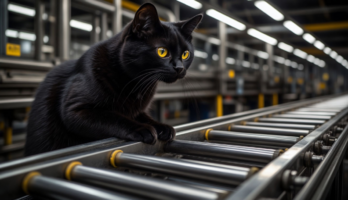Biology - An Illustrated Guide to Science (794127), страница 22
Текст из файла (страница 22)
These organisms eat organicmatter in other organisms—eitheralive (as hunters) or dead (asscavengers).● Saprotrophic organisms are the decayorganisms. They digest dead materialsusing enzymes that they secreteexternally. Fungi and many bacteria aresaprotrophes.● Parasites (biotrophs) feed on livingorganisms without killing them.photoautotrophic(green plants,some protists,purple sulfurbacteria)holozoic(most animals,carnivorous plants,some protists)parasitic(some bacteria,fungi, protists,animals, plants)© Diagram Visual Information Ltd.●128MAINTENANCEKey wordsabsorptionexocytosisgutlysosomeorganellepseudopodiumvacuoleNutrition: ProtistaFeeding and intracellular digestion in Amoeba proteusPrey is detected.AmebaIngestion: pseudopodiasur round prey.pseudopodiaAmeba feeding●Amebas are examples of Protista thatfeed by engulfing their prey inextensions of the body calledpseudopodia.
Amebas will eat bacteriaand small algae.cellmembranenucleusprey (alga)cytoplasmIngestionPseu dopodia extend from theameba to surround the prey. Thesepseudopodia join up to completelyengulf the prey and form a foodvacu ole, which then passes into thecell body.● Once inside the cell, lysosom es,membrane-bound organ ellescontaining digestive enzymes, joinwith the vacuole membrane andempty their contents into the vacuole.● Powerful enzymes break down thefood in much the same way as occursin mammalian gu ts.
Interestingly, thevacuole contents are at first acid, thenneutral, and then faintly alkaline—mirroring the sequence in the guts ofhigher animals.●Exocytosis:indigestiblemater ial isexpelled.Ingestion: a foodvacuole is for med.foodvacuoleAbsorption and exocytosisThe digested materials pass into thecell body of the ameba by diffusionand selective absorption .● In a process known as excocytosis,indigestible remains are passed to theoutside world when the food vacuolefuses with the cell membrane.© Diagram Visual Information Ltd.●l ysosomeSoluble products areabsorbed into the cytoplasm.Digestion: Iysosomes emptyenzymes into the food vacuole.129Nutrition: leaf structureTypical flowering plant (dicotyledon)MAINTENANCEKey wordsLeaf: surface viewleaf: surface viewphotosynthesisstomatranspirationveinmarginveinapical(terminal) budleaf blade (lamina)internodeshootleafleaf:transverse sectionlateral (axillary) budnodemidribmain rootrootlateral rootspetiole (leaf stalk)Leaf: transverse section (low power)leaf blade (lamina)midribveinleaf:transversesection(high power)vascular bundlexylemphloemveinLeaf: transverse section (high power)upperepidermiscell wallvacuolepalisademesophyllnucleuschloroplastcytoplasmPhotosynthesisLeaves are structures that carry outphotosyn thesis in green plants.● In order to do this they need to beable to collect sunlight, water, andcarbon dioxide, and get rid of wasteoxygen.●Harvesting lightThe larger the surface area, the morelight that can be collected.● The upper surface of the leaf tends toreceive more light than the lowersurface.
Plants concentrate their mosteffective photosynthetic cells near theupper surface for this reason.●Carbon dioxide supplyOnly 0.03 percent of the atmosphereis carbon dioxide. Plants need toprocess large volumes of air to gatherenough carbon dioxide forphotosynthesis. Holes in the lowersurface of the leaf (called stom ata)allow air to enter the leaf and getdirectly to the active photosynthetictissues.● Waste oxygen can also leave throughthe stomata.●Water supplyPhotosynthesis requires a supply ofwater. This is provided through thevein s of the leaf. A constant supply ofwater is also required to replace thewater lost by tran spiration throughthe stomata.● Veins also carry the products ofphotosynthesis to the rest of the plant.veinxylemphloemparenchymaspongymesophyllair spacelowerepidermiscuticleguard cell stoma (plural stomata)© Diagram Visual Information Ltd.●130MAINTENANCEKey wordsdiffusionguard cellosmosisstomaNutrition: stomataStomataStoma open during daySurface viewcell wallguard cellcytoplasmDiffusionchloroplastDiffu sion is the random movement ofparticles from areas of highconcentration to areas of lowconcentration.
It requires no energyinput from a living organism.● Gases diffuse in and out of leaves vialeaf pores (stom ata).●vacuolestoma (open)nucleusCross sectionStomatal structure●epidermal cellStomata are made of pairs of cellscalled gu ard cells that are joined atthe ends. The cell walls of guard cellsare not equally thick all around thecell—the thickest parts are the wallsimmediately adjacent to the next cellin a pair. The cell walls here are alsoseparated by a small space called thestoma or pore.thin cell wall (outer)guardcellStomatal functioningStomata can increase the size of theiropening.
This occurs when the guardcells take in water by osm osis andswell. The unequal thickness of thecell walls leads to the cells bulgingoutward in the area farthest away fromthe thick walls. Forces in the cell wallsthen push the thickened cell wallsaway from each other—and so thepore widens. Deflating the guard cellscloses the pore again.● Stomata tend to open during daylighthours when the plant needs carbondioxide for photosynthesis. Duringtimes of drought, the stomata willclose to conserve water.© Diagram Visual Information Ltd.●thick cell wall (inner)guard cell(turgid)stoma (open)Stoma closed at nightSurface viewCross sectionguard cellstoma (closed)guard cell(flaccid)131Transport: stem structureMAINTENANCEKey wordsStemscambiumepidermisligninorganellephloemvascular bundleGeneralized plantshootstem:transversesectionStem: transverse sectionphloemxylemleafepidermiscortex(parenchyma)Materials●vascular bundle:transversesectionrootstemxylemcambiumpith(parenchyma)Vascular bundle: transverse sectionPlants have two separate transportsystems: xylem , which moves waterand mineral salts from the roots to theleaves, and phloem , which movessugars and organic materials from theleaves to all other parts of the plant.● Both of these transport systemsuse tubes of conducting cells.These are found in the vascu larbu n dles separated by thecam biu m , which divides toproduce new xylem and phloem.● Parenchyma cells beneath theepiderm is constitute the cortex, theouter portion of the stem, and areused for storing food.
Parenchymacells in the center of the stem formthe pith, the soft spongelike core ofthe stem.XylemXylem tissue consists of long columnsof cells stacked one on top of theother. These cells are dead at maturityand have lost their end walls. A xylemvessel looks like a hollow tube madeup of many cylindrical sections.● Xylem cell walls are thickened withlign in , which gives them strength andalso makes them waterproof (see page132). Perferations allow water to enterand leave the vessels.●fibersPhloemcambiumphloem:sieve tubecompanioncellparenchyma cell(pith)Phloem tissue has two cell types: sievetube elements and companion cells.● Sieve tube elements are arranged incolumns as they are in xylem, but theirend walls are still present, thoughperforated with many holes. The cellcontents of the elements are alsohighly modified to form a slime plugwith no visible organ elles.● Companion cells support and nourishsieve tube elements in the phloem.●© Diagram Visual Information Ltd.vascular bundlexylem vessel132MAINTENANCEKey wordscambiumligninphloemphotosynthesisxylemThe need for lightFood is manufactured in the leavesand green stems of plants byphotosyn thesis.
Photosynthesisrequires a constant energy input in theform of light. Plants that are shadedmake less food.● Plants with tall stems are less likely tobe shaded than plants with shortstems. However, the stem needs to bestrengthened to prevent it collapsing:reinforcement produces rigid woodystems that can support the leaves inthe light.Transport: woody stemWoody stemsGeneralized treebranch●LigninThe strengthening of stems isprovided by a complex carbohydratecalled lign in , which lines the walls ofxylem vessels.● Xylem vessels are produced by thedivision of cam biu m cells, whichform a continuous cylinderseparating the phloem on theoutside and xylem on theinside.● Lignin is waterproof, sothe xylem vesselsare supplied withperforations that allowwater to pass into andout of the xylemvessels.canopy(foliage)branch:transverse sectiont runkrootsBranch: transverse section●secondaryxylem (wood)annual ringpithcortexAnnual ringsMore vessels areproduced during theactive growing seasons(spring and summer).● These periods of growthproduce annual rings, which canbe seen in a transverse section ofthe main trunk.
Counting the numberof annual rings provides an estimate ofthe age of the tree.© Diagram Visual Information Ltd.●secondary phloemvascular raybark:remains of epidermiscorkcork cambium133Transport: root structureMAINTENANCEKey wordsDicotyledon root structureendodermisepidermisphloemroot hairsuberinGeneralized plantxylemshootRoots and stemsThe root is the part of the stem that isadapted to conditions underground.● It has the same basic tissues as thestem (xylem and phloem ) butarranged in slightly differentconfigurations.●Root: transverse sectionepidermisroot hairsrootEpidermis and cortexroot: transversesection● The epiderm is of a root issupplied with many roothairs. These areconcentrated near the growingtips of the root and are concernedwith absorption of water andminerals from the soil.● Immediately inside the epidermisis a region of the root called thecortex.
















